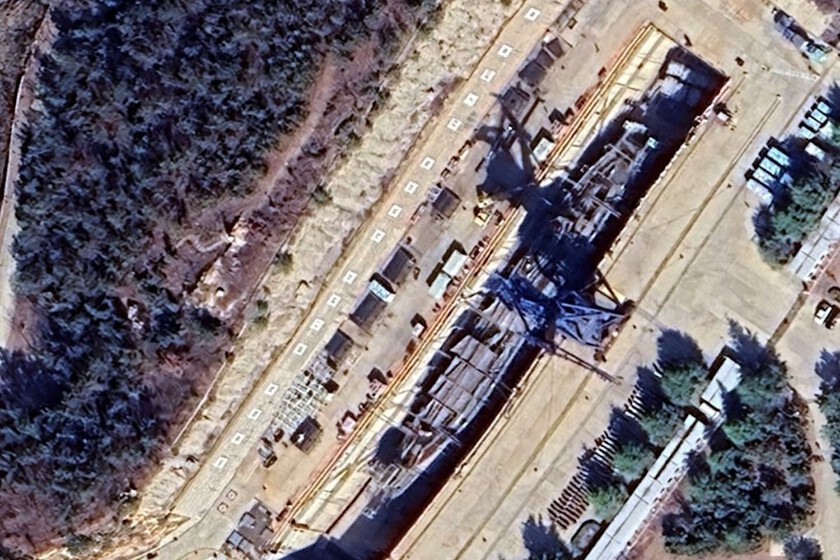A hidden base. Thanks to updated satellite images on Google Earth, naval analyst Alex Luck found something that hadn’t been visible before: at least six nuclear submarines at the First Submarine Base in Qingdao, in Shandong, China.
Strategically located with direct access to the Yellow Sea, the East China Sea and the Sea of Japan, this base has long been a sensitive military facility. Now, it’s relatively visible on public digital mapping services. In other words, this once-secret nuclear submarine base—where, as Luck explained, several nuclear submarines are docked—confirms the ongoing expansion of China’s submarine fleet and its growing focus on strengthening strategic deterrence through naval power.
Submarines. Images from space show at least six nuclear submarines docked, including two Type 091s, two Type 093As, one unidentified submarine and one in dry dock that may be decommissioned.
According to Luck, one Type 092 is currently out of service and being replaced by the more modern Type 094. That means five nuclear-powered submarines (though conventionally armed) and at least one with nuclear ballistic capability are present. The base, which China has kept under a relative veil of secrecy, appears to be a centerpiece of its expanding maritime strategy.
Evolving deterrence. China currently possesses about 600 nuclear warheads—a modest number compared with the U.S.’ more than 5,000—but enough to unleash a global nuclear winter in the event of conflict. Although Beijing maintains a no-first-use nuclear weapons policy, it has begun diversifying its strategic arsenal. Traditionally reliant on land and air platforms, China is now expanding its nuclear-capable submarine force.
A report by the Nuclear Threat Initiative noted that the People’s Liberation Army Navy operates nuclear-powered submarines alongside a robust fleet of diesel-electric submarines, the latter forming the backbone of its undersea force. However, the focus appears to be shifting toward modernizing and expanding the nuclear component. U.S. government estimates suggest the total fleet could reach 65 units by 2025 and 80 by 2035.
China is getting serious. Over the past 15 years, China has built 12 nuclear-powered submarines: two Type 093 (Shang I class), four Type 093A (Shang II class), and six Type 094 (Jin class). The Jin-class subs carry submarine-launched ballistic missiles such as the JL-2 (CSS-N-14) and the more advanced JL-3 (CSS-N-20), marking China’s first credible naval nuclear deterrent.
Each Jin-class submarine can carry up to 12 missiles. China publicly displayed them during the 2019 parade marking the 70th anniversary of the founding of the People’s Republic. In parallel, experts expect construction of the new Type 096 to begin soon. This new class will operate alongside the Type 094s in the 2030s, supporting President Xi Jinping’s goal to significantly strengthen this strategic branch.
The submarine race. The discovery of this active base is another sign of how the boundaries of strategic surveillance have blurred in the age of digital mapping. But beyond the technological anecdote, it highlights the growing role naval deterrence plays in China’s nuclear strategy. With a more advanced fleet and leadership intent on projecting power in the Western Pacific, China’s submarine program represents a critical factor in the shifting geopolitical balance.
The challenge lies not only in the number of submarines but also in their technology, stealth, autonomy and strategic armament. As China continues expanding its undersea presence, the Qingdao revelation serves as a reminder that the next major contest for nuclear supremacy may not be seen from the surface—but observed, as it’s now, from orbit.
Images | Google Earth (via AlexLuck) | United States Naval Institute
The post Google Earth Update Reveals China’s New Naval Base and Its Six Nuclear Submarines appeared first on Xataka On.




